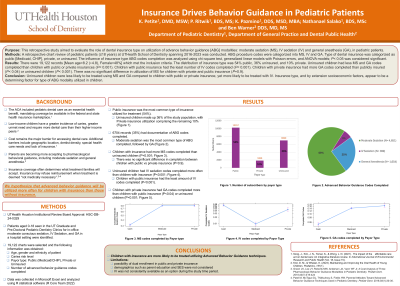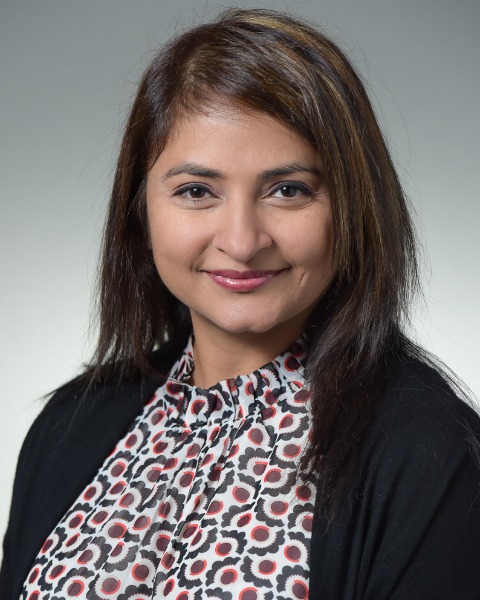Other
23 - Insurance Drives Advanced Behavior Guidance in Pediatric Patients


Kendra Petite, DMD
Resident
University of Texas Health Science Center-Houston
University of Texas Health Science Center-Houston
Pearland, Texas, United States- KP
Katherine Pazmino, DDS, MSD, MBA
UT Health Sciences Centre Houston
- NS
Nathanael O. Salako, BDS, MSc
Professor and Interim Chair
UT Health Houston-School of Dentistry
UT Health Houston-School of Dentistry, Texas, United States - BW
Ben F. Warner, DDS, MD, MS
UT Health - Houston

Priyanshi Ritwik, DDS, MS
Professor
UTHealth Houston School of Dentistry
University of Texas Health Science Center Houston School of Dentistry
Houston, Texas, United States
Priyanshi Ritwik, DDS, MS
Professor
UTHealth Houston School of Dentistry
University of Texas Health Science Center Houston School of Dentistry
Houston, Texas, United States- BA
Bhavini Acharya, BDS
Pediatric Dentistry Graduate Program Director
University of Texas Health Science Center-Houston
Houston, Texas, United States
Presenting Author(s)
Co-Author(s)
Research Mentor(s)
Program Director(s)
Purpose: This retrospective study aimed to evaluate the role of dental insurance type on utilization of advance behavior guidance [ABG] modalities, particularly moderate sedation (MS), IV sedation (IV) and general anesthesia (GA), in pediatric patients.
Methods: A retrospective chart review of pediatric patients (≤18 years) at UTHealth School of Dentistry spanning 2016-2023 was conducted. ABG procedure codes were categorized into MS, IV and GA. Type of dental insurance was categorized as public [Medicaid, CHIP], private, or uninsured. The influence of insurance type on completion of ABG codes was analyzed using chi-square test, generalized linear models with Poisson errors, and ANOVA models; P < 0.05 was considered significant.
Results: There were 19,122 records [Mean age=8.2(±4.8), Female=48%] which met the inclusion criteria. The distribution of insurance type was 54% public, 36% uninsured, and 10% private. Uninsured children had less MS and GA codes completed than children with public or private insurances (P < 0.001). Children with public insurance had the least number of IV codes completed (P < 0.001). Children with private insurance had more GA codes completed than publicly insured (P < 0.04) or uninsured children (P < 0.001). There was no significant difference in utilization of MS for children with private and public insurance (P=0.9).
Conclusion: Uninsured children were less likely to be treated using MS and GA compared to children with public or private insurance, yet more likely to be treated with IV. Insurance type, and by extension socioeconomic factors, appear to be a determining factor for type of ABG modality utilized in children.
Identify Supporting Agency and Grant Number:

.jpg)